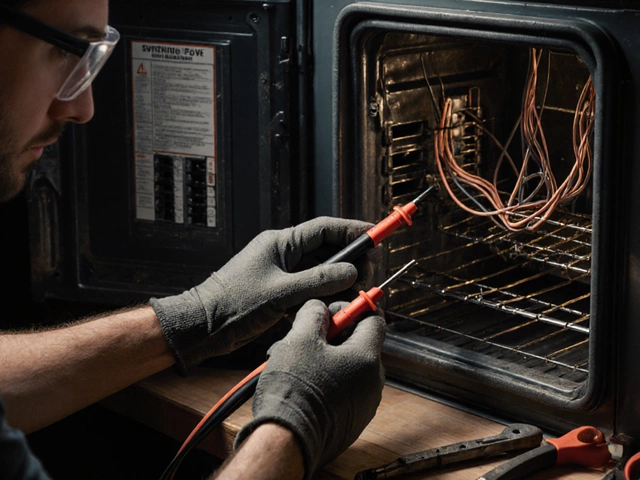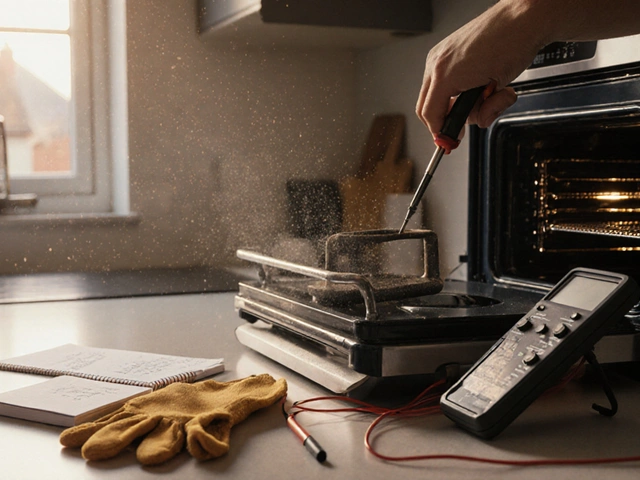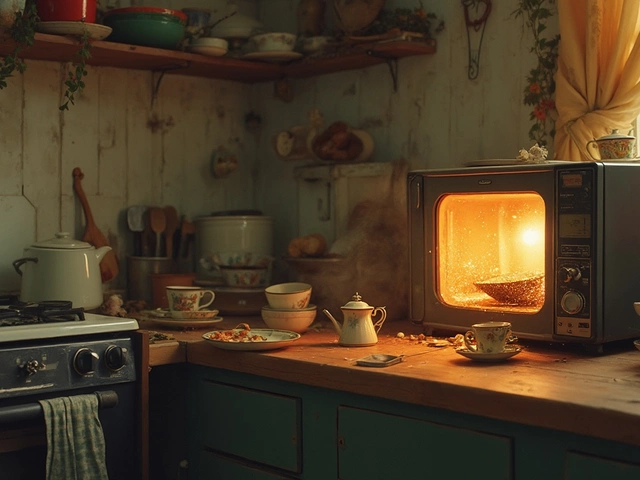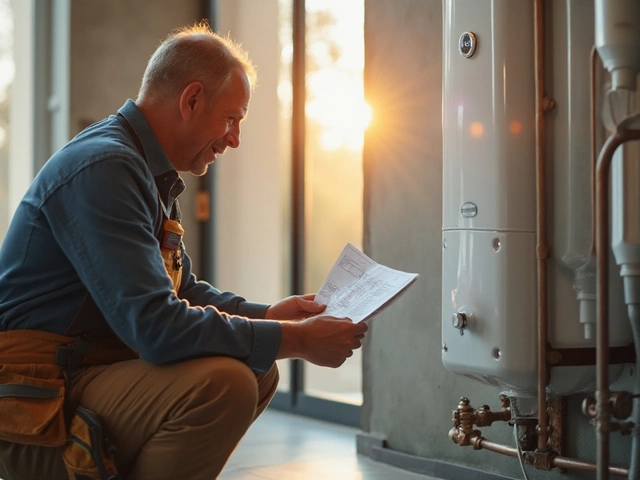Heat pumps are like the superheroes of home heating and cooling. They pull double duty by heating in the winter and cooling in the summer. But like any superhero, they have a kryptonite: low temperatures. So, when does a heat pump start to slack? Typically, when outside temps drop below 25 to 30 degrees Fahrenheit, things get tricky.
At these lower temperatures, your heat pump may struggle to pull enough heat from the frigid air outside to warm your home efficiently. It's kind of like trying to squeeze water from a rock! That's when your system might need a little backup or switch to another heating method.
If you notice rising heating bills or the heat feels weaker than usual, your heat pump might be losing efficiency. That's a red flag that you can't ignore! But don't sweat it. There are ways to keep your heat pump in tip-top shape even in colder weather, and we're here to walk you through it.
- How Heat Pumps Work
- Understanding Temperature Thresholds
- Signs of Inefficient Heat Pumps
- Tips to Improve Efficiency
- When to Consider Repairs or Replacement
How Heat Pumps Work
Alright, let's break it down. A heat pump isn't magic, though it might seem like it when your house stays cozy without burning a ton of energy! It's actually a device that moves heat from one place to another, using a small amount of electricity. Think of it as a two-way street for thermal energy, working hard in both winter and summer.
During the winter, a heat pump pulls heat from the outside air and moves it inside your home. Yes, even on cold days, there's warmth out there waiting to be captured! There's a refrigerant inside the pump that absorbs heat as it changes from liquid to gas, like how sweat cools you off in the summer.
Key Components
The system consists of a few core elements: the compressor, condenser, evaporator coils, and expansion valve.
- Compressor: It compresses the refrigerant, raising its temperature and pressure.
- Condenser Coils: The hot refrigerant moves through these, releasing heat into your home.
- Evaporator Coils: Located outside, these coils let the refrigerant absorb warmth from the air.
- Expansion Valve: Here the refrigerant expands and cools, ready to absorb more heat.
Seasonal Switching
Come summer, the process reverses. Your heat pump removes heat from inside your house, effectively acting as an air conditioner. This dual functionality is what makes heat pumps super efficient compared to traditional HVAC systems.
Efficiency Insights
One reason folks love heat pumps is their efficiency. They're known to achieve over 300% efficiency, meaning for every unit of electricity used, they can transfer three units of heat. That's a win for both the planet and your wallet!
Here's a quick stat for you:
| Outside Temperature (°F) | Efficiency (%) |
|---|---|
| 45 | 300+ |
| 30 | 250 |
| 15 | 180 |
So, that's the scoop on how heat pumps work. They're nifty devices that keep homeowners comfortable across seasons. Knowing the ins and outs of these components helps you appreciate and maintain your system better.
Understanding Temperature Thresholds
So, you're probably wondering when your heat pump starts feeling the cold even more than you do. Let's break it down. A heat pump works by extracting heat from outside air, even in winter. It's pretty amazing until things get seriously chilly, usually below 25 to 30 degrees Fahrenheit. At this point, the air just doesn’t have enough heat to keep up with your cozy indoors.
Why does this matter? Because the efficiency of a heat pump drops when the temperature plummets. Robert C. Webber, an expert in HVAC systems, puts it like this:
"Once you hit that lower threshold, the heat pump has to work a lot harder, using auxiliary heating to make up for the shortfall, which can really bump up those energy bills."
As the temperature lowers, the heat pump relies more on backup systems, such as electric resistance heating, which aren't as efficient. And this is where understanding how your heat pump operates can save you some serious cash.
Typical Temperature Thresholds
Most systems are designed to be efficient until around 30 degrees Fahrenheit. Below that, here's what usually happens:
- Your heating may feel less intense.
- The system takes longer to reach the desired temperature.
- You might hear the backup heating system kick in more often.
Why It Matters
Knowing these thresholds helps you plan your heating strategy and possibly save money. For instance, if you live in a super cold area, you might consider a more powerful auxiliary system or alternative heating sources for those extra nippy days.
Pondering the efficiency limits of a heat pump below freezing can really make a difference not just in comfort, but in those monthly bills too!
| Temperature (°F) | Efficiency | Notes |
|---|---|---|
| Above 30 | Optimal | Normal heat pump operation, most efficient. |
| 25 - 30 | Reduced | May need a boost from auxiliary heating. |
| Below 25 | Low | Relies heavily on backup systems, higher costs. |
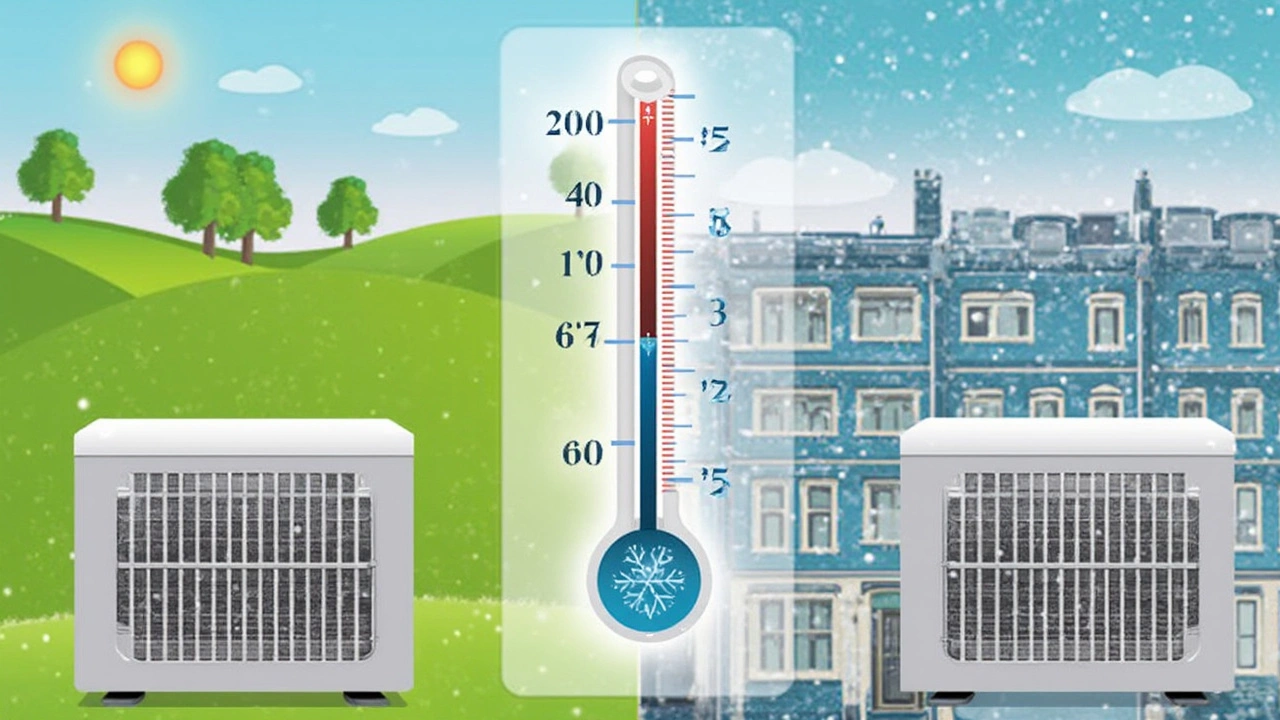
Signs of Inefficient Heat Pumps
Recognizing when your heat pump is not working efficiently can save you a bundle on energy costs. So, how do you know when it’s time for some maintenance or repair?
Poor Heating Performance
If your home isn't as cozy as it used to be, your heat pump might be struggling. Heating temperature issues often mean the unit is not pulling enough heat from the outside air. Feel a bit chilly despite what the thermostat says? That's a red flag.
Unusual Noises
Grinding, rattling or buzzing sounds aren't just annoying—they can indicate something's up with your heat pump. These noises could mean anything from loose parts to more serious malfunctions.
Spiking Energy Bills
Has your electricity bill gone through the roof lately? Heat pump efficiency tends to dip when they have to overwork to maintain your home's comfort level. This translates to higher energy usage, which you'll notice in your monthly bills.
Frequent Cycling
Frequent on and off cycling isn't normal. If your heat pump is cycling on and off more than usual, it might be an efficiency issue. The system could be straining to maintain the desired temperature.
Frost Build-up
A layer of frost on the unit is often a tip-off of an inefficiency problem. Frost can reduce a pump's ability to extract heat from the air, impacting performance. If you spot ice, it's time to look into it.
Staying alert for these HVAC tips and signs means keeping your heat pump efficient, ensuring you get the best performance from your system. If these issues sound familiar, calling a pro for a closer look might be the smart move!
Tips to Improve Efficiency
Feeling like your heat pump could do with a little pep in its step? You're not alone. Plenty of folks are looking for ways to crank up the efficiency, especially when those energy bills start creeping up. Here are some tried-and-true tips to help you keep things running smoothly:
Regular Maintenance
First things first: ongoing maintenance is essential. It's kind of like giving your car a tune-up. Cleaning or replacing filters can make a huge difference. Dirty filters can choke up the system, making it work harder than it should. Aim to check them monthly, especially in peak seasons.
According to the Environmental Protection Agency, "Replacing a dirty, clogged filter with a clean one can lower your air conditioner's energy consumption by 5% to 15%."
Utilize a Smart Thermostat
A smart thermostat can adjust settings based on your routine. It knows when you're home, when you're away, and adjusts temperatures accordingly. That means you're saving energy without even thinking about it. Plus, who doesn't love the convenience of controlling everything from your phone?
Improve Home Insulation
You'd be surprised how much heat escapes through poorly insulated walls, windows, or doors. Seal drafts and consider adding or upgrading insulation. This step not only helps your heat pump but also cuts down on overall energy usage.
Supplement with Other Heating Sources
When the weather turns bitterly cold, sometimes your heat pump might need a little help. Consider using supplemental heating sources like a space heater or radiant floor heating to ease the burden.
Keep an Eye on the Outdoor Unit
The outdoor unit needs some love too. Keep it free from leaves, snow, and other debris that could block its airflow. Make sure there's at least a two-foot clearance all around for optimum performance.
Consideration of Location
If you're planning a new installation, location is everything. Position your heat pump in a place that's away from high winds, which can cool the coil and reduce efficiency.
So there you have it. By keeping these steps in mind, you're on your way to staying warm without breaking the bank. Feel free to share these tips with others struggling to keep their heat pump efficient!
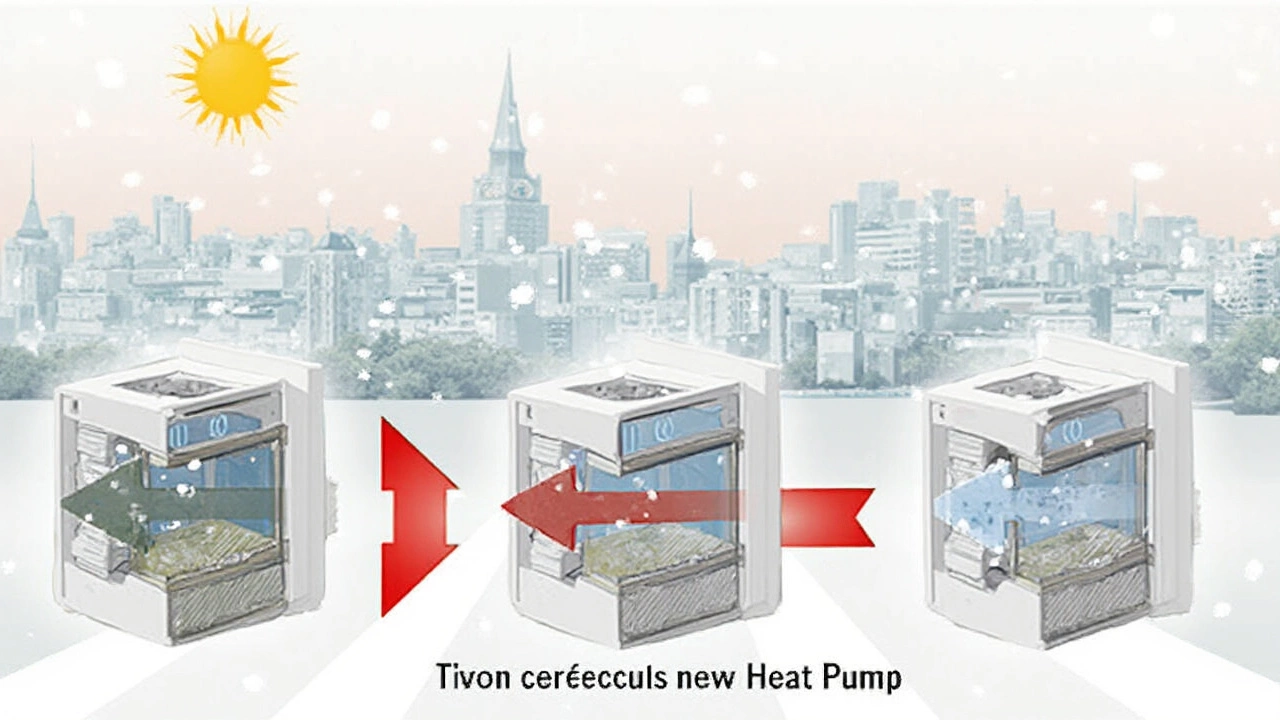
When to Consider Repairs or Replacement
So, you're wondering if it's time to bid farewell to your trusty heat pump or just give it a little TLC? Let's break it down for you.
Signs You Might Need a Repair
- Increased Energy Bills: If you're noticing unexpected spikes in your heating bills but haven’t suddenly become a hardcore thermostat cranker, your heat pump might be losing its efficiency.
- Odd Sounds or Smells: Heat pumps usually hum quietly like a soft lullaby. If it suddenly sounds like a rock concert or emits strange odors, it's time to call in a technician.
- Poor Performance: If your home feels like a freezer when it shouldn’t, or the heat pump is cycling more frequently than a merry-go-round, that's a sign.
Before jumping to any conclusions, a repair might be all you need. According to the U.S. Department of Energy, "Heat pumps can be highly efficient if properly maintained, often offering the equivalent heating and cooling capacity of traditional systems at a fraction of the energy cost."
When to Opt for a Replacement
- Age Over Expertise: If your heat pump has been around for more than 10-15 years, it might be time to consider an upgrade. Like all good things, heat pumps have a lifespan.
- Frequent Breakdowns: If you're on a first-name basis with your HVAC technician, that's usually not a good sign. Constant repairs might mean it's cheaper in the long run to replace the system.
- Outdated Technology: Newer models are more efficient and eco-friendlier. Investing in the latest technology can save you money and make life a little greener.
A study by the HVAC Efficiency Association notes that newer models can improve energy efficiency by up to 20%. That's a hefty chunk off your bills!
| Age of Heat Pump | Action |
|---|---|
| 5-10 Years | Consider Repairs |
| 10-15+ Years | Replacement Likely Needed |
| Frequent Repairs | Replacement Recommended |
Decisions, decisions. When you're weighing the options, remember to factor in both current energy costs and potential savings from a newer system. Sometimes the upfront cost pays off quicker than you think!


